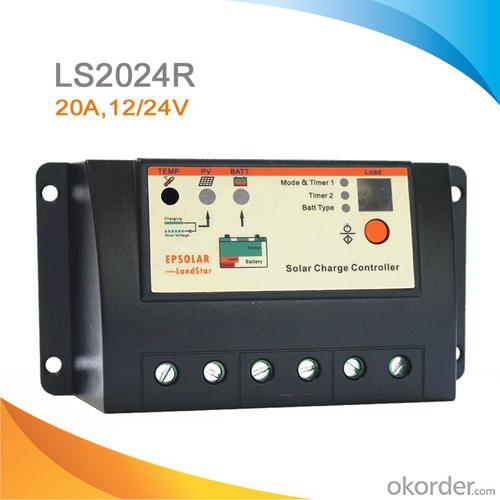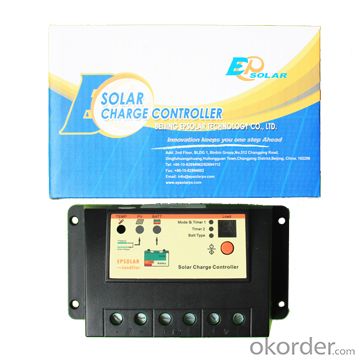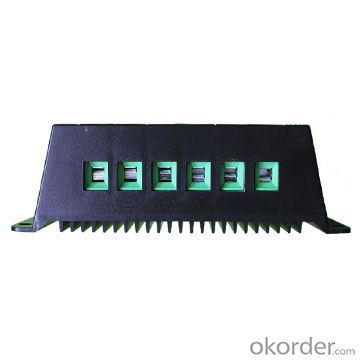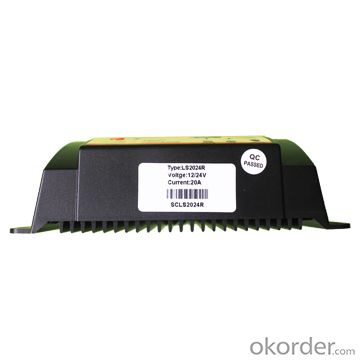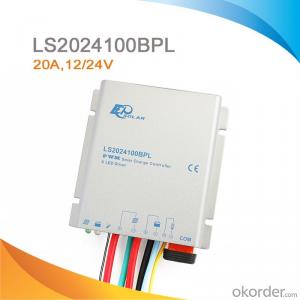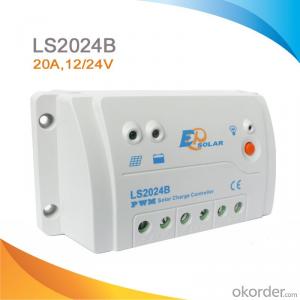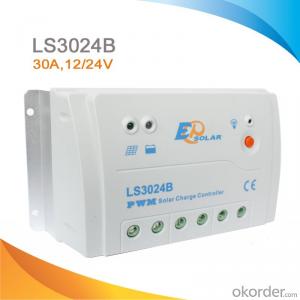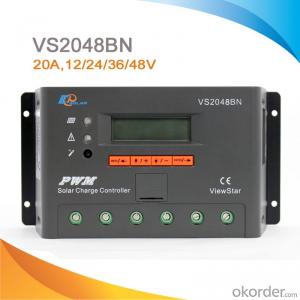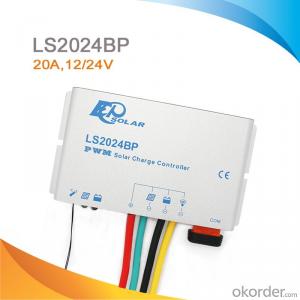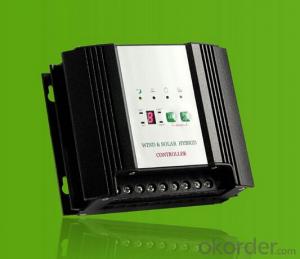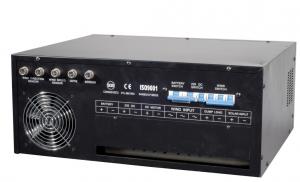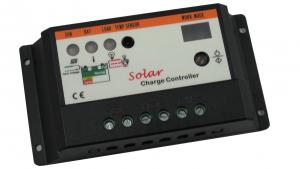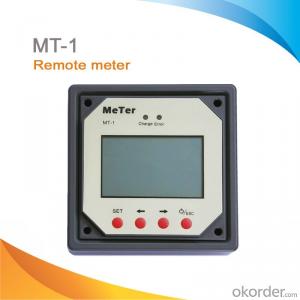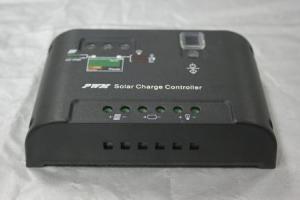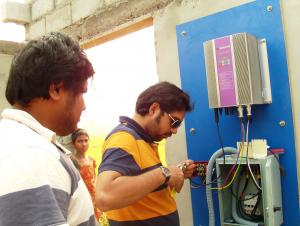Solar Epic Charge Controllers - PWM Solar Charge Controller, 20A, 12/24V with Integrated LED Driver
OKorder Service Pledge
OKorder Financial Service
You Might Also Like
Solar Controller Descriptions:
This series solar charge controller combines the solar charge controller and LED constant current driver Light and timer control (Single timer and dual timer optional) It It is ideal for public lighting area, such as street light, path way, garden lights, parking area, bus station etc.
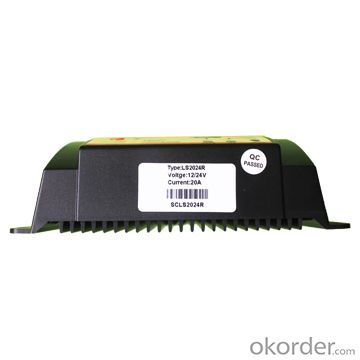
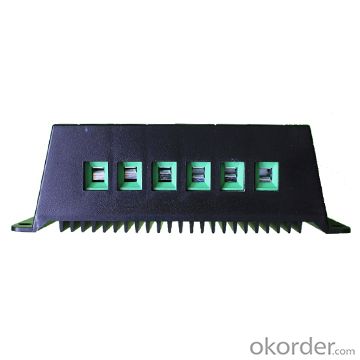
Features:
·High efficient Series PWM charging
·Use MOSFET as electronic switch
·Widely used, automatically recognize day/night
·Digital LED menu with simple setting and easy using
·Intelligent timer function with 1-15 hours option
·Gel, Sealed and Flooded battery type option
·Temperature compensation
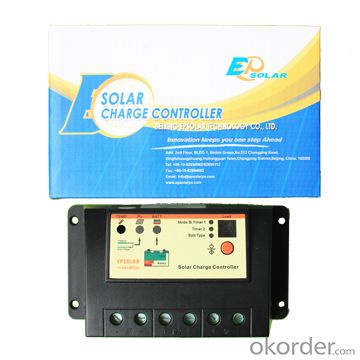
Electronic Protections:
·Overheating
·Over discharging
·Over charging
·Load overload
·Load short circuit
·PV reverse polarity
·Battery reverse polarity
Specification:
Electrical parameters | LS1024R | LS2024R |
Nominal System Voltage | 12 / 24VDC auto work | |
Rated Battery Current | 10A | 20A |
Max. Battery Voltage | 32V | |
Charge Circuit Voltage Drop | ≤0.26V | |
Discharge Circuit Voltage Drop | ≤0.15V | |
Self-consumption | ≤6mA | |
Overall dimension | 140 x 65 x 34mm | 144 x 75x 45mm |
Terminal | 4mm2 | 10mm2 |
Net weight | 0.15kg | 0.25kg |
Working temperature | -35℃ to +55℃ | |
Humidity | 10%-90% NC | |
Enclosure | IP30 | |
Battery Voltage Parameters (temperature at 25℃) | |||
Battery charging setting | Gel | Sealed | Flooded |
Equalize Charging Voltage | —— | 14.6V;x2/24V | 14.8V;x2/24V |
Boost Charging Voltage | 14.2V;x2/24V | 14.4V;x2/24V | 14.6V;x2/24V |
Float Charging Voltage | 13.8V;x2/24V | 13.8V;x2/24V | 13.8V;x2/24V |
Low Voltage Reconnect Voltage | 12.6V;x2/24V | 12.6V;x2/24V | 12.6V;x2/24V |
Low Voltage Disconnect Voltage | 11.1V;x2/24V | 11.1V;x2/24V | 11.1V;x2/24V |
Equalize Duration | —— | 2 hours | 2 hours |
Boost Duration | 2 hours | 2 hours | 2 hours |
- Q: What is the maximum current that a solar controller can handle?
- The maximum current that a solar controller can handle depends on its specifications and capabilities, which can vary widely. It typically ranges from 10 to 60 amps, but there are controllers available that can handle even higher currents.
- Q: Can a solar controller be used with a solar hybrid system?
- Yes, a solar controller can be used with a solar hybrid system. The solar controller regulates the flow of energy between the solar panels, battery storage, and the grid, ensuring optimal performance and efficient energy management in a hybrid system.
- Q: What is the role of a solar controller in preventing battery memory effect?
- The primary function of a solar controller is to regulate the charging process of a battery that is connected to a solar panel system in order to prevent the memory effect. The memory effect, also known as voltage depression, occurs when a battery is repetitively charged and discharged at the same voltage levels, resulting in a decrease in its overall capacity. To prevent this memory effect, a solar controller monitors and controls the charging process of the battery. It manages the voltage and current supplied to the battery, guaranteeing that it is fully charged without being overcharged. One way in which a solar controller achieves this is by implementing a three-stage charging process known as bulk, absorption, and float. During the bulk stage, the controller supplies a high current to rapidly charge the battery until it reaches a specific voltage level. In the absorption stage, the voltage is maintained at a constant level while the current is gradually reduced, allowing the battery to reach its maximum capacity. Finally, in the float stage, the voltage is decreased to a maintenance level, ensuring that the battery remains fully charged without being overcharged. By carefully managing the charging process, a solar controller prevents the battery from being exposed to the same voltage levels for an extended period of time, thus avoiding the memory effect. This ensures that the battery's full capacity is utilized and its lifespan is extended. Moreover, advanced solar controllers may incorporate additional features such as temperature compensation, equalization charging, and low voltage disconnect to further safeguard the battery and optimize its performance. In summary, the main role of a solar controller in preventing battery memory effect is to regulate the charging process, guaranteeing that the battery is charged and maintained at optimal levels. This ultimately leads to an extended lifespan and maximum capacity for the battery.
- Q: What is the maximum load current in standby mode of a solar controller?
- The maximum load current in standby mode of a solar controller is typically very low or zero. Standby mode refers to the state where the solar controller is not actively charging or discharging the battery, but is still operational and ready to perform its functions. During this mode, the load current is minimized to conserve energy and extend the battery life. In some cases, the load circuit may be completely disconnected in standby mode to eliminate any current flow. However, the specific maximum load current in standby mode can vary depending on the design and specifications of the solar controller. It is important to refer to the manufacturer's documentation or product specifications for accurate information regarding the maximum load current in standby mode for a particular solar controller model.
- Q: Can a solar controller be used in a solar-powered street lighting system?
- Yes, a solar controller can be used in a solar-powered street lighting system. The solar controller helps regulate and optimize the charging and discharging of the batteries in the lighting system, ensuring reliable power supply and efficient energy management.
- Q: How do I calculate the size of a solar controller for my system?
- To calculate the size of a solar controller for your system, you need to consider two main factors: the maximum current capacity of your solar panels and the maximum current capacity of your battery bank. First, determine the maximum current output of your solar panels. This information is usually provided by the manufacturer. Next, determine the maximum current capacity of your battery bank. This can be calculated by dividing the battery capacity (in ampere-hours) by the desired charging time (in hours). Once you have these two values, choose a solar controller that can handle the higher of the two currents. It's recommended to choose a controller with a slightly higher current rating to allow for any future expansion of your solar panel or battery capacity.
- Q: How does a solar controller prevent overcharging?
- A solar controller prevents overcharging by regulating the amount of current and voltage going into the battery from the solar panels. It monitors the battery's state of charge and adjusts the charging process accordingly, ensuring that the battery is not subjected to excessive voltage or current that can lead to overcharging and potential damage.
- Q: Can a solar controller be used with a solar-powered public transportation facility?
- Yes, a solar controller can be used with a solar-powered public transportation facility. A solar controller helps regulate the charging and discharging of batteries in a solar power system, ensuring efficient and safe operation of the facility. It helps monitor and manage the energy flow, optimize power usage, and protect the batteries from overcharging or discharging. Therefore, implementing a solar controller is essential for maintaining the reliability and performance of a solar-powered public transportation facility.
- Q: Can a solar controller be used in a solar-powered water pump system?
- Yes, a solar controller can be used in a solar-powered water pump system. A solar controller helps regulate the power output from the solar panel to the water pump, ensuring optimal efficiency and protecting the system from overcharging or damage. It also helps monitor and control the flow of electricity, maximizing the performance of the water pump in a solar-powered system.
- Q: Can a solar controller be used with a solar heating system?
- Yes, a solar controller can be used with a solar heating system. A solar controller is responsible for regulating and optimizing the performance of the solar heating system by managing the flow of heat transfer fluid, monitoring temperatures, and controlling pumps or valves. It helps maximize the efficiency and effectiveness of the solar heating system by ensuring that the collected solar energy is properly utilized for heating purposes.
Send your message to us
Solar Epic Charge Controllers - PWM Solar Charge Controller, 20A, 12/24V with Integrated LED Driver
OKorder Service Pledge
OKorder Financial Service
Similar products
Hot products
Hot Searches
Related keywords




